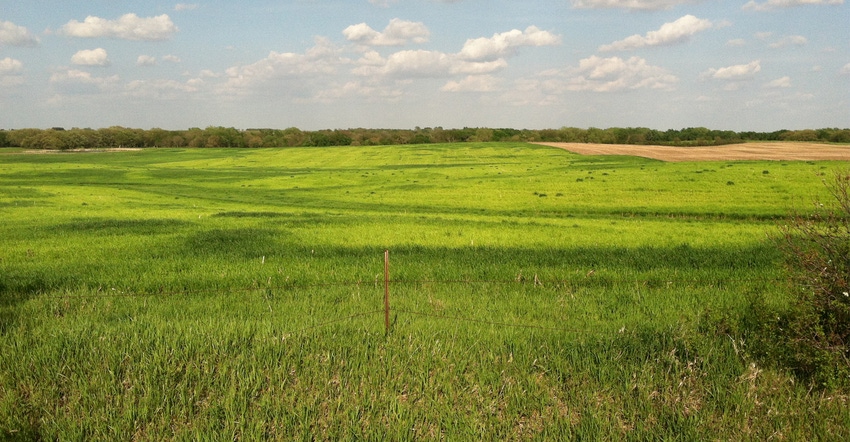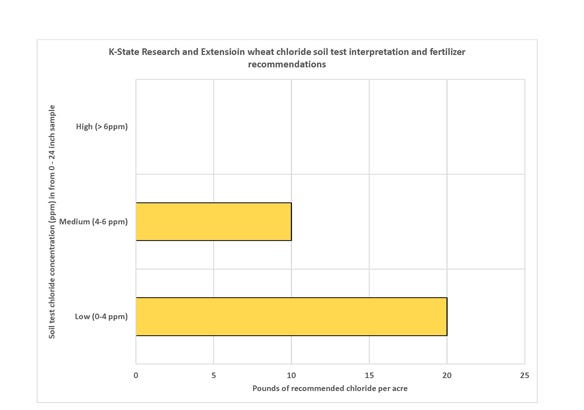December 28, 2020

As spring approaches and winter wheat begins to green up, farmers still have the opportunity to stimulate spring tillering on late-planted fields or those fields with thin stands with early nitrogen.
If not applied in the fall, two other key nutrients, chloride and sulfur, can be included at green-up during the early spring fertilizer pass across the field. The question is: Do you need to include chloride and sulfur?
The potential benefits from chloride and sulfur application will not likely be the same across Nebraska. Nebraska winter wheat production spans nearly 1 million acres from the northwest corner to the southeast corner of the state, while changing 20 inches of average annual precipitation and spanning 29 unique ecoregions.
In southeast Nebraska, local observations and experiences from past University of Nebraska Extension educators and specialists suggest that sulfur and possibly chloride applications are warranted on nonirrigated, no-till winter wheat after soybeans, which is the most common tillage and rotation practice.
Do you need chloride?
First, chloride is used by plants for ion balance, plant cell hydration and more. Adequate availability of chloride for wheat has shown to suppress fungal diseases such as tan spot, leaf rust and stripe rust.
Through a 2012 meta-analysis of Kansas chloride fertilizer studies, researchers found an 8% yield increase because of chloride applications. Kansas State University (Figure 1) has soil sample interpretations for 0- to 24-inch depth chloride concentrations and corresponding fertilizer recommendations.

FIGURE 1: This graphic is a K-State Research and Extension chloride soil test interpretation for winter wheat.

Past research done in the Nebraska Panhandle did not measure yield responses to chloride. K-State Extension specialists stated the probability of a yield response to chloride in rainfed wheat in north-central and northeast Kansas seems higher than in western Kansas.
Soil and flag leaf tissue analysis interpretations could help determine the current and future need for chloride fertilization in southeast Nebraska. Chloride concentrations less than 0.18% in the flag leaf at the start of heading can indicate chloride is not sufficient.
Results from two 24-inch soil samples that I took from two rainfed wheat fields in southeast Nebraska this fall were 0.7 and 2.6 parts per million, both low by K-State Extension interpretations (Figure 1).
I found similar low soil test chloride over the past several years in east-central Nebraska, too. Potash, also called potassium chloride (about 45% to 47% chloride content), is the most readily available chloride fertilizer for wheat growers.
Do you need sulfur?
Sulfur deficiency has been documented in areas of southeast Nebraska (photo above) dating back to 2011. Visible symptoms of sulfur deficiency have been more common in fields with eroded hillsides that are low in organic matter on silt loam and silty clay loam soil.
Wheat is commonly planted on these highly erodible fields under no-till practices. Likewise, no-till winter wheat fields in north-central and northeast Kansas have a longer documented history of visible sulfur deficiency compared to other regions in Kansas, according to K-State Extension specialists.
Sulfur deficiency is noticed in early spring after green-up and can be confused with a shortage of nitrogen. In addition to potential yield benefits of sulfur, end-use quality is improved when wheat has sufficient sulfur. New research from K-State found sulfur application reduced asparagine concentration in the grain, which lowers the potential for acrylamide (probable carcinogen) formation during food processing.
UNL is conducting a similar study on the effect of nitrogen and sulfur application on wheat end-use quality. Similar to chloride, application rates of 15 to 20 pounds of sulfur per acre is often sufficient to prevent deficiency. A dry blend of ammonium sulfate (24% sulfur), potassium chloride and urea is a readily available option from ag retailers in southeast Nebraska as wheat begins to green up.
Will winter wheat need chloride and sulfur fertilizer this spring in southeast Nebraska? I always encourage farmers to conduct their own on-farm research to fine-tune initial recommendations.
In addition, farmers can get assistance through the Nebraska On-Farm Research Network to conduct their own on-farm research with replicated and randomized field length strips trials. Learn more by emailing [email protected].
Mueller is a University of Nebraska cropping systems Extension educator.
You May Also Like




